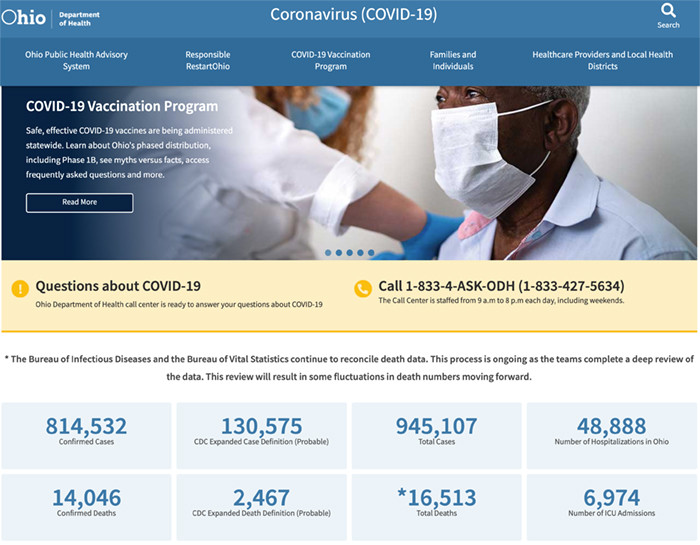Ohio has ued the InnovateOhio platform to create a COVID-19 data dashboard. Source: Ohio Department of Health
InnovateOhio is also working to enable a single digital identity for ODH and other government agencies. Deputy State CIO Katrina Flory tells Government Technology that as of November, 15 of Ohio’s cabinet agencies were on the IOP, and more than a million digital identities between government workers and citizens had been created.
The state has created the OH|ID account, enabling citizens or businesses to sign in to multiple government agency systems more securely with a single account. “OH|ID encrypts the personal information of each user separately, using a unique value generated from each user’s password,” notes the InnovateOhio website. “Only the user has the key. Only the user knows the password. And only the user can decrypt their information.”
The idea is to use single sign-on technology, multifactor authentication and identity proofing to “identify and authenticate the legitimacy of a person to meet advanced security standards or requirements.” A single sign-on tool can make citizens’ interactions with state services more streamlined and easier to navigate.
InnovateOhio envisions data as a shared strategic asset that is secured, governed by accountable entities, reusable and interoperable. InnovateOhio helped ODH integrate data and establish a public coronavirus dashboard, according to Government Technology. The publication reports:
It also helped ODH visualize the COVID-19 case count by geographics at and below the county level, which allowed the department to make solid decisions when it came to directing resources to local areas to combat the outbreak.
This is a great example of how data can be used to have a real and direct impact on citizens’ lives.
DIVE DEEPER: These are the key state and local government IT trends to watch this year.
How States Can Accelerate Innovation
All of these examples are innovative, but they are not exactly cutting-edge. Many states can deploy these kinds of solutions, especially something such as single sign-on, which is commoditized at this point and can be cloud-based.
However, government agencies will likely have a tough time deploying these solutions at scale, which is more of an organizational challenge than a technical one.
IT leaders need to get buy-in from governors or other political leaders to help them drive these changes and push against ingrained structures and behaviors. For example, if IT leaders can convince political leaders that there is real value in having one digital identity for citizens, that can lead them to authorizing IT teams to conduct a technical examination of government websites to determine whether single sign-on could be applied. That may require structural and organizational changes to break down silos.
Transformative times, such as during the pandemic, can be opportunities for investment in modern services, but they often lead to further stratification between the haves and have-nots in governments.
Those that choose to respond to this moment in time and invest will be able to deliver better services to citizens more efficiently. Those that don’t try or that get it wrong will fall further behind, and may lose citizens and businesses to other areas of the country.
There is clearly a lot of risk in this — nothing less than the long-term success of a community or a state may be at stake. If states use expected federal aid to simply plug budget holes and get back to where they thought they were heading pre-pandemic, they will be letting the opportunity to modernize slip away.
Ohio has shown through InnovateOhio that modern, digital government services can be delivered to citizens if there is the vision and political will. Other states can learn a lot from the Buckeye State.
This article is part of StateTech’s CITizen blog series. Please join the discussion on Twitter by using the #StateLocalIT hashtag.














